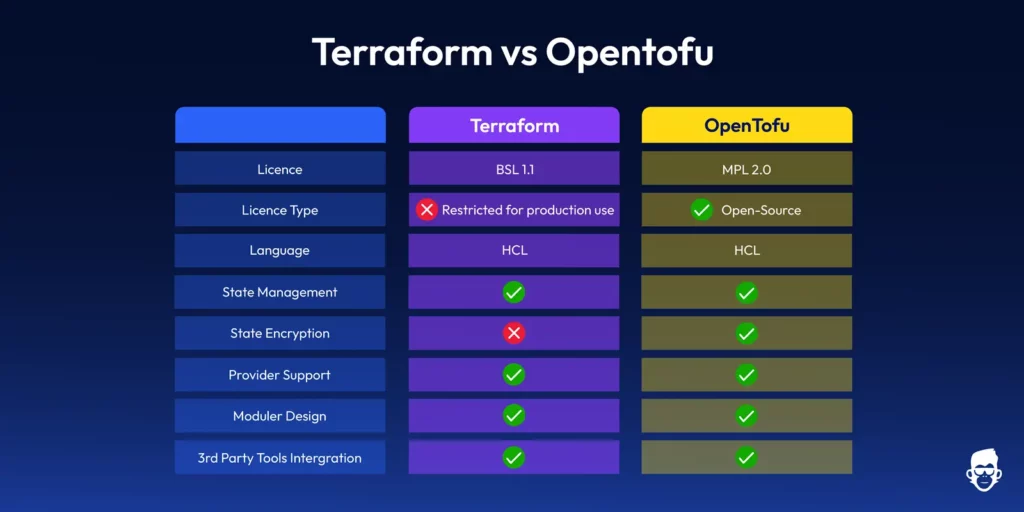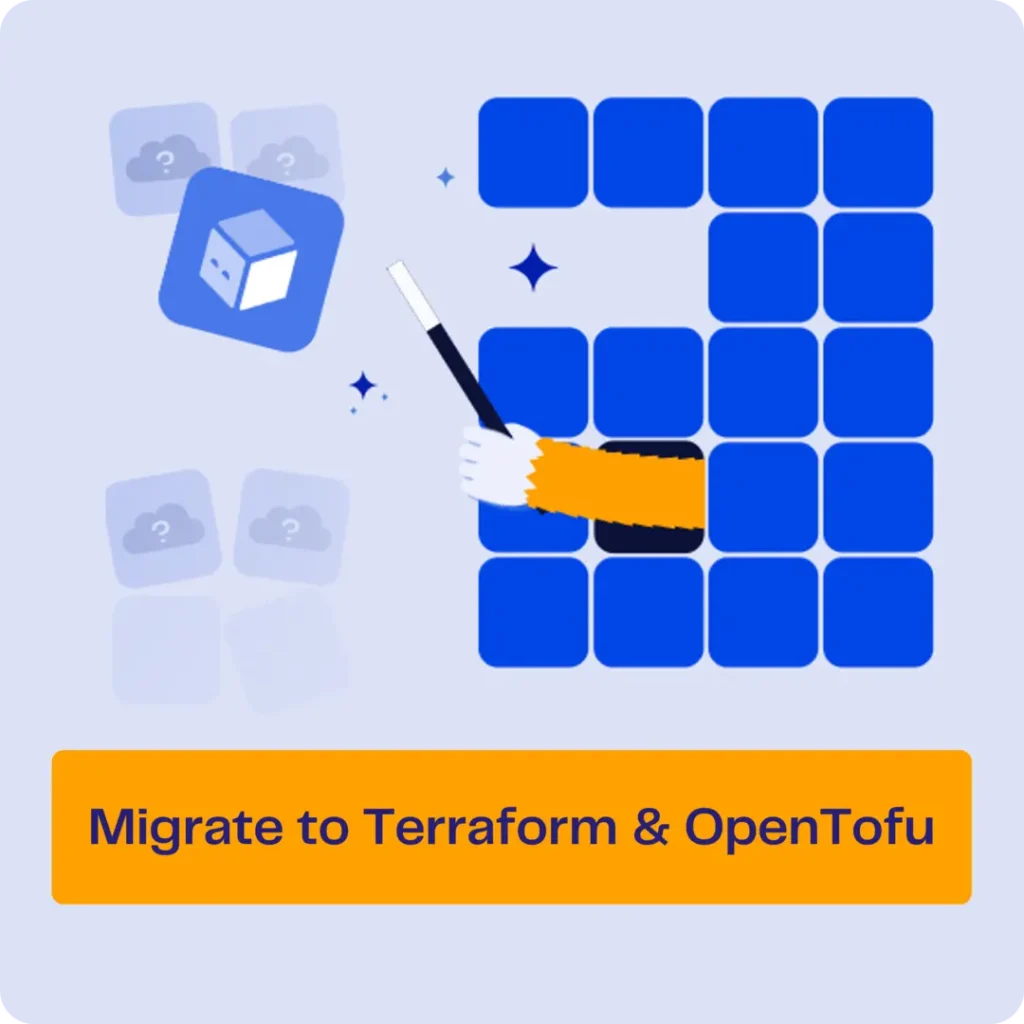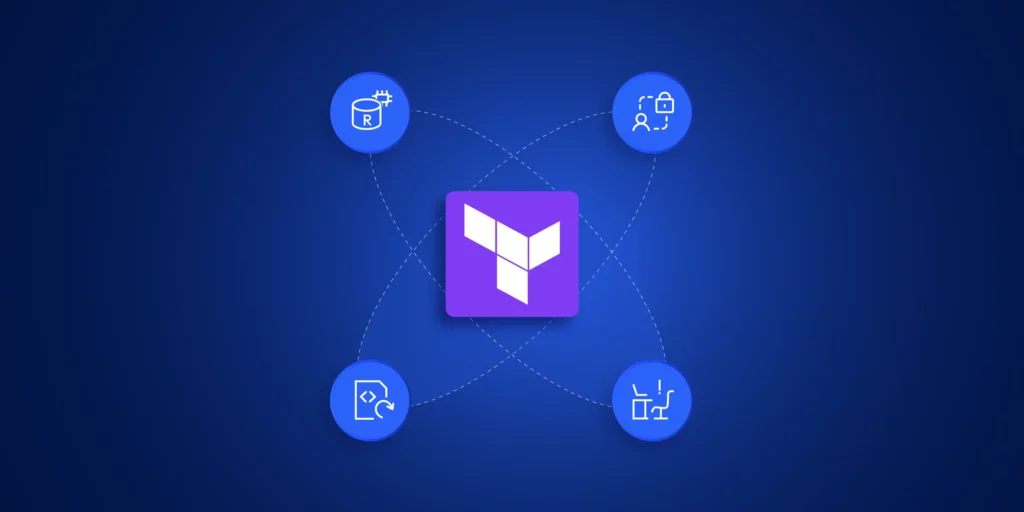Governed by the Linux Foundation, OpenTofu is a vendor-neutral, fully open-source infrastructure-as-code (IaC) platform created by the community as a successor to HashiCorp’s Terraform. OpenTofu was initiated in response to HashiCorp’s change of Terraform’s license from the Mozilla Public License (MPL) to the Business Source License (BSL). As organizations utilize cloud infrastructure and automation, OpenTofu aims to give teams an open, scalable IaC platform, and early adopters report stable production use. When evaluating opentofu vs terraform, teams benefit from OpenTofu’s full compatibility with Terraform, letting them tap the same provider ecosystem and community know-how.
Feature-by-Feature: Opentofu vs Terraform – Performance, Usability, Extensibility
| Category | Terraform | OpenTofu |
| Performance | Proven in large-scale production deployments and backed by a vast plugin ecosystem | Comparable performance, with community-driven optimizations that match Terraform at scale |
| Usability | Rich documentation, extensive tutorials, and a mature community though the breadth of features can challenge newcomers | The community-driven project aims to lower the onboarding barrier for new users |
| Extensibility | Extensive plugin ecosystem and robust provider support | Compatible with Terraform modules and supports the same providers. |
| Integration | Excellent support for integrating with tools like Jenkins and GitHub Actions | Designed to drop-in to existing Terraform workflows and CI/CD pipelines (e.g., GitHub Actions |
Early community benchmarks comparing Opentofu vs terraform show comparable performance for both tools at all scales. Terraform’s commercial add-ons (e.g., Terraform Cloud) bundle governance features, while OpenTofu users can integrate similar controls via open-source or third-party options. OpenTofu’s focus on community-driven development allows it to be agile and more user-focused. While OpenTofu uses the same syntax as Terraform, new IaC users may face a steeper learning curve due to relatively limited documentation and IDE tooling compared to Terraform.

Licensing and Community – Open-Source vs. Controlled Ecosystems
In the opentofu vs terraform debate, the biggest divider is licensing model.HashiCorp backs Terraform, which is licensed under the Business Source License (BSL) from version 1.6 onward. Earlier versions (up to 1.5) remain under the Mozilla Public License (MPL 2.0). Which offers an open-source approach but has a commercial version (Terraform Cloud) with premium features and support. OpenTofu is stewarded by the Linux Foundation and released under the Mozilla Public License 2.0 (MPL-2.0), ensuring neutral governance and free use. This fully open model of transparency gives users full control over the tool, from code contributions to updates and modifications.
HashiCorp curates the Terraform ecosystem and offers an official SaaS platform (Terraform Cloud), and OpenTofu gives a space where community contributions drive the tool’s evolution.

Just in case you want to migrate – Controlmonkey can 1-Click Migrate you from Terraform to OpenTofu. Learn More in our next Product Showdown
OpenTofu vs Terraform? Choosing the Right Tool for Your Team
- Terraform: A natural fit if your workflows already rely on the wider HashiCorp stack (Vault, Consul, Terraform Cloud) or if you prefer a single-vendor SaaS for policy and governance. Commercial support and bundled features reduce lift in regulated environments.
- OpenTofu: Best when you prioritise MPL-2.0 licensing, vendor neutrality, and the freedom to self-host or customise. API compatibility with Terraform means you can adopt it without rewriting modules or pipelines.
Pros and Cons – Strengths and Trade-Offs of Each Tool
| Category | Terraform | OpenTofu |
| Pros | – Mature tool with a large user base. – Extensive provider support. – Reliable integrations with CI/CD tools. – Enterprise-ready (with Terraform Cloud). | – Fully open-source with transparent development. – Agile and responsive to community needs. – Easier to adopt for new users. – Seamless compatibility with Terraform. |
| Cons | – Commercial version introduces complexity. – Difficult for beginners due to the steep learning curve. | – Smaller community compared to Terraform. – Fewer integrations and support options. |
Long-Term Strategy – Futureproofing Your Infrastructure Workflows
Terraform and OpenTofu provide the essential tools to build scalable, repeatable infrastructure. However, the futureproofing of your infrastructure workflows may depend on your team’s strategy:
- Terraform: When your company requires enterprise-level support in the long term run, Terraform Cloud and Enterprise, can provide solid governance, security, and operational tools.
- OpenTofu: OpenTofu is an ideal provision infrastructure solution for DevOps engineers who must maintain their open-source environment. OpenTofu provides flexibility through its MPL-2.0 open-source license, allowing teams to modify and extend the codebase while remaining vendor-neutral. However, it lacks some of the integrated governance and collaboration features found in Terraform Cloud or Enterprise.
Conclusion – Making an Informed, Practical Choice for Your Team
The terraform vs opentofu decision ultimately hinges on your team’s priorities and appetite for open-source governance.. Terraform is a very established tool in the IaC environment, offering maturity, support, and scalability. On the other hand, OpenTofu offers a refreshing open-source alternative with a strong focus on community collaboration and flexibility. If your team values community-driven development, full transparency, and minimal vendor lock-in, OpenTofu might be the better choice. Terraform is reliable if you use it at an enterprise level and need a tool with wide support.
If your team is evaluating OpenTofu vs Terraform, let ControlMonkey streamline your migration and daily workflows. Book a demo today.




